#Picasso Poster art
Explore tagged Tumblr posts
Text
Picasso Poster for Sale | Garett Stephens Gallery
Discover a captivating Picasso poster for sale at Garett Stephens Gallery. Adorn your space with this iconic artwork, blending creativity and elegance. Visit our gallery today to explore our diverse collection and find the perfect piece to enrich your home or office décor.

0 notes
Text

aabon35
#Menina#Madrid#Spain#art#España#arte#gpt#museo_del_prado#http://aabon35.blogspot.com ⚫️ http://arubio28814.blogspot.com#exhibition#artist#canicas#figure#IA#poster#girl#aabon35#3D#Velazquez_pintor#lady#Picasso#marbles#color#x#street#engineering#moma#tiktok#Gallery
19 notes
·
View notes
Text

Picasso - The Kiss, 1966
(May not be real)
#pablo picasso#Picasso#art#the kiss#1966#graphic design#poster#illustration art#black and white#wall art#spanish art#printmaking#Le Rêve#modern art#contemporary art#art collection#Guernica#Musée Picasso#moma#Museum of Modern Art#barcelona#Boy with a pipe#Neoclassicism#blue period#colorful
7 notes
·
View notes
Text

#picasso#digital painting#picassoprint#henri matisse#matisseposter#Gallery Wall Set#Museum Poster#modern art prints#exhibition poster#vintage wall decor#picasso poster#black and white#modern gallery wall#picasso art print#Henri Matisse Print#instant download#digital print#digital art#digital printing#pablo picasso#cubism
6 notes
·
View notes
Text
Cubist Portrait of a Woman - Posters with Wooden Frame

Bring your artwork to life on these posters made from high-quality photo paper (250gsm). These posters come with a pine wood frame for a natural look and come with a protective acrylic glass cover for long-lasting home decor. Their natural wood frame is available in black and white and you can choose between a satin or matte finish for your paper. Available in three sizes, and vertical orientations to best suit your art. Sawtooth hanging hardware included (except for the 11.7" x 8.3" size which has a small metal hole on the back instead).
- High-quality 250gsm photo paper in a satin or matte finish
- Pine wood frame with a protective acrylic glass cover
- Natural wood, black and white frame color options
- Three sizes
8.3" x 11.7"
11.7" x16.5"
20" x 28"
#cubist#portrait#woman#posters#wooden frame#cubist art#wall art#home decor#abstract art#modern art#woman portrait#framed art#artistic poster#interior design#decorative art#cubism#artistic decor#geometric art#Picasso style#framed poster#art print#abstract portrait#contemporary art#gift idea#artistic illustration
0 notes
Text
Abstract Painting With Vibrant Geometric Human Face Shapes - poster wooden frame
Visit my store from here

Visit my store from here
1 note
·
View note
Photo

RARE Large Framed Beksinski Master Set of Surreal Art Poster Lovers Very Rare .Premium Beksinski Framed Print Set of Master Works Measurements: 22x22 in (framed) Each Molding: Professional studio flat top black maple wood mold Matting Around Print :Professional Brick Red & Black 100% Acid Free Board Glazing: Glass (included) Mounting Method: Hot Vacuum Press(will never fold or fade) This is a professionally custom framed Set and vacuum dry-mounted fine art poster editions of original Zdzislaw Beksinski paintings. Glass is included.This is a high quality custom framed & matted Print. The double mat adds depth giving the display a unique "looking through a window'' appearance. The print is bonded to foam core on a hot vacuum press. This bonding gives the print a perfect flat and smooth texture. This process also insures the print will never fold or fade with age or moisture. This wonderful display makes a thoughtful and original gift containing a classic vintage touch yet modern design, allowing it to fit alongside both modern and classic decor. BUY WITH CONFIDENCE. ALL OF MY DELICATE ITEMS ARE SHIPPED WITH A SPECIAL 3 LAYER PROTECTION SYSTEM.
0 notes
Text
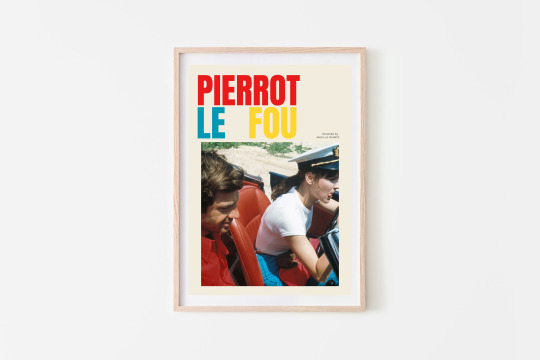
Pierrot Le Fou Jean Luc Godard film poster
#jean luc godard#pierrot le fou#godard poster#film poster#typography#Anna Karina#french#french actress#french girl#picasso#Jean Luc Godard#Pierrot Le Fou#60s#60s film#60s Fashion#love#art#classic cinema
1 note
·
View note
Text
the pastas if they had a normal life
BEN- Gamer boy who lives in his parent's basement. You saw it coming. Ben would literally spend his days living off energy drinks and chips. Brags about his game collection even though he doesn’t have a job. He doesn’t care that he doesn’t have a job, but he should.
Jeff- He never moved on from the emo renaissance. He has posters of MCR and other emo bands up on his walls. They’re chipped and wilted, but he’ll be dead before they get taken down. Definitely uses a pair of broken wired earphones because he thinks he’s too cool for AirPods.
Eyeless Jack-Jack would be the most pretentious male manipulator sorry. Donna Tartt would have a field day with him. He exclusively only listens to music from the 80s and mansplains everything. He is intelligent though, and he dresses immaculately.
Toby- That friend who has never been calm in their life. One second he’s at home, then the next he’s in Portugal on a solo holiday. Should not be allowed a bank account. Always the life of the party. People wonder how he’s still alive.
Helen- Weird art kid. Spends all of his time in his room, either playing piano or painting. He thinks he’s destined to be the next Picasso. Has good grades and big dreams, but no friends to tell them to.
Liu- Probably the most normal. Good grades, decent social life. He’s not popular, but he’s not a loner. Kind of mainstream. Always drinking coffee, probably works like two jobs. Has connections everywhere.
Jane- She walks down the street and like 90% of heads turn to look at her. Quiet, but not shy. Has a small group of friends, but feels like none of them know her. Probably has a glass of red wine every Saturday night. Has a cat.
Nina- The town's bravest girl solely because she’s single-handedly bringing back scene-core. Doesn’t care that people give her weird looks on public transport. Makes kandi bracelets and gives them out to strangers. Literally SO sweet and for what.
Clockwork- No one wants to get on her bad side. She has like two friends but she loves them with all her heart. Doesn’t give a fuck about grades. She probably works out a lot but never drinks water. Lives alone.
#creepypasta#creepypasta headcanon#creepypasta headcanons#creepypasta imagines#jeff the killer#ben drowned#eyeless jack#bloody painter#helen otis#clockwork#jane the killer#nina the killer#homocidal liu#ticci toby#creepypasta x reader
477 notes
·
View notes
Text
The Bear’s Blue Period Is Coming

After his close friend committed suicide in 1901, Picasso was overwhelmed with grief, so using the colors blue and blue-green, his paintings mostly portrayed “a deep sense of loss and mourning”, from 1901 to 1904. This time is known as Picasso’s Blue Period.
In the s3 teaser and the above poster, the color blue tells us that s3 will be The Bear’s Blue Period. Carmy and the rest of the team will go through loss and mourning, but a question remains: Picasso was able to push through and produce great art in his Blue Period, but will The Bear be able to push through and produce great work during a time of loss and mourning? I think they will.
After his Blue Period, Picasso’s Rose Period began. In 1904, Picasso met and began a relationship with Fernande Olivier, who inspired him to use “cheerful orange and pink colors” in his paintings. As you can see, after rain comes sunshine, so with The Bear, I believe that they will go through their Blue Period in the first episodes of season 3, but at the end, they will start their Rose Period.
Isn’t it interesting that some of Sydney’s clothes are cheerful orange and pink? Her bedroom literally has items that are cheerful orange and pink. Syd is The Bear’s Fernande Olivier

99 notes
·
View notes
Text


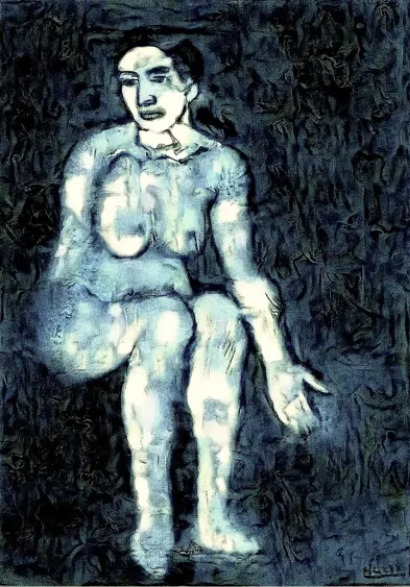
[ID: Three images; the first is Picasso's "The Old Guitarist", showing an extremely old and pale man, crosslegged, head bowed tiredly, playing a guitar. The second image shows the painting in black and white, with another painting faintly visible underneath; most notably a woman's face is visible just above the old man's. The final image is a version of the underpainting, showing a nude woman seated, knees together, one arm around her torso, her other hand outstretched.]
For some reason best known only to him, one of my very early school teachers had a poster of Picasso's The Old Guitarist hanging in our classroom. I don't know how other people view it because it's a very iconic image, but I was fascinated with it as a kid because it was deeply unsettling and weird -- I also used to stare at the horror movie box covers near the register at our local video rental store for much the same reason. I like the painting a lot, but I've never been able to shake the unsettled feeling around it.
At a recent Art Institute lecture, the speaker mentioned that they'd done some imaging on it and they believe it to have been painting on an old wooden door, and that there was a whole separate painting of a woman underneath it. Which is very, uh, Picasso. There's an interesting article here about "rebuilding" the painting using "neural style transfer" which is basically an early AI art engine that trains on Picasso's other work, then looks at the image and rebuilds it. (Before anyone gets all fucked up about it, this was in 2019, before the current AI art nonsense.)
I just thought it was cool, and I'd never seen the under-image before. She's not nearly as unsettling, although the third image still has a touch of the eerie about it.
113 notes
·
View notes
Text

What appeared to be fine golden chains wove around the pictures, linking them together, but after examining them for a minute or so, Harry realized that the chains were actually one word, repeated a thousand times in golden ink: friends … friends … friends …
'tis done, veritably so.
time for another round of "people that i care about a whole lot". i do these every other year since that is just about enough time to accumulate enough new friends to include in these.
lots of very new faces! and some people who should have been here long long ago were finally included. here i present you: @thecurioustale, working as always on his eponymous masterpiece, @obsidianchild, with whom i broke up recently but i still consider my bff irl, @utilitymonstergirl, wearing the proud face of her hellion isidore, @artbyblastweave, with his truculent creations, @sirartwork, doing a tribute to a picasso painting, @lipstickchainsaw, who was mentioned years ago in one of this but they finally get to participate, you humble artist, @lumsel, showcasing to me, their biggest fan, one of the best comics that anyone has ever done online, @dandelionwhiner, with her discord avatar since her tumblr avatar is far too abstract and finally @magic5ball, also as his discord avatar for much the same reasons.
i included some references to discord since its the platform where i most often interact with them, a little wanted poster for Laika Albarn, my favourite cancelled artist who has recently decided to retire her little series Limerence and a quick little nod at AI art, which has been so controversial as of lately in my circles.
i would like to make a quick shoutout to some of the people who didnt quite make the cut, @lilietsblog,@unmotivated-cosmere-nerd,@yumantimatter and @paradigm-adrift.
63 notes
·
View notes
Text
oh my fucking god i found the best image ever while looking for furry artists to commission for my friend's character's character sheet.

look at this work of beauty. it. has. so. many. damn. layers. to. it.
the fucking posters which include: prometheus getting his liver eaten by eagles (i think), sigmund freud and roxanne wolf.
an unplugged wii u with not tv.
the tissues.
the soyjak parents. the father even has a damn hitler/charlie chaplin moustache???????
the medal that says "27 wasted years" that isn't even gold or silver. it's bronze...
the green thing in the bottom right corner with pills??? is it fucking week, yerba mate? what is it?????
the roxanne plush on the desk.
what i assume, a trash can full of damn vapes. sobbing on the floor already at this point.
the ipad which is just lying randomly on the floor.
the other plushie of a character i don't know.
and finally, probably a clipboard of some unfinished schoolwork? i'm guessing it's that based on the shitty black and white printing.
this is my favourite piece of art ever. scientists will find this thousands of years from now and try to decrypt it like some ancient cave paintings. children in schools will discuss this. hell, scientists and scholars will for tens if not hundreds of years. it's a modern mona lisa beyond time.
to the creator of this image - piper paige. picasso has nothing on your genius..........
19 notes
·
View notes
Text
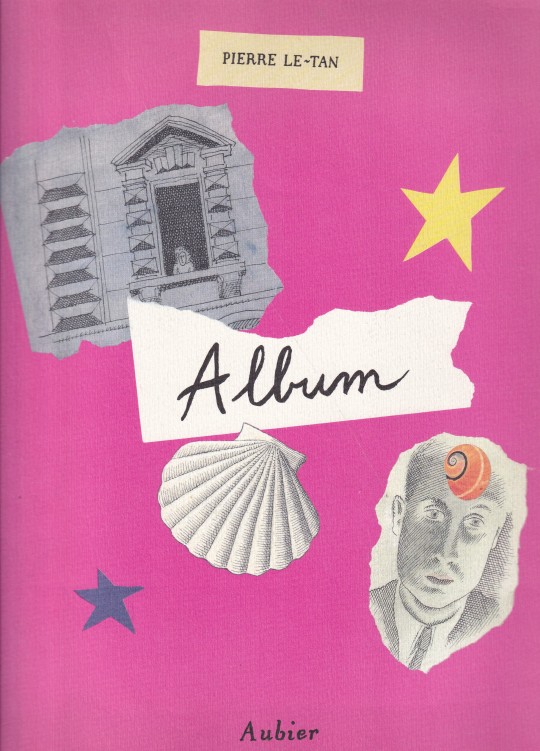
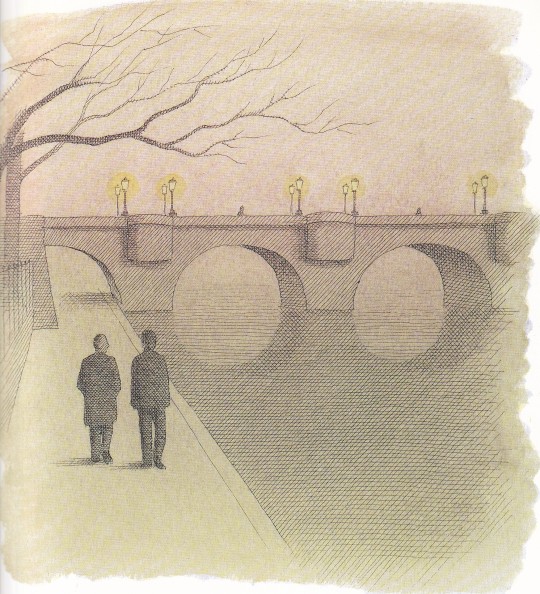
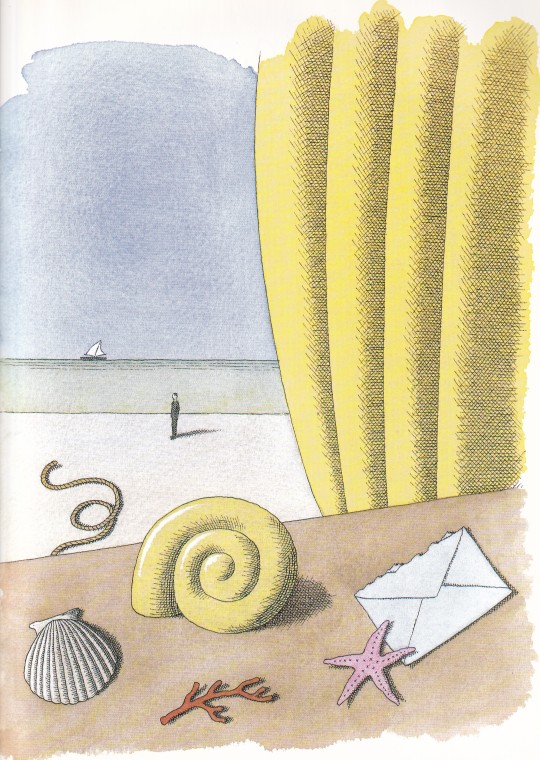
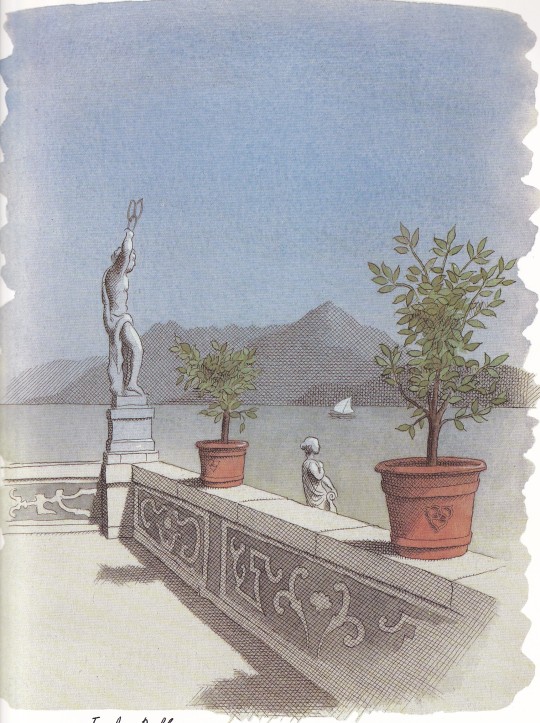
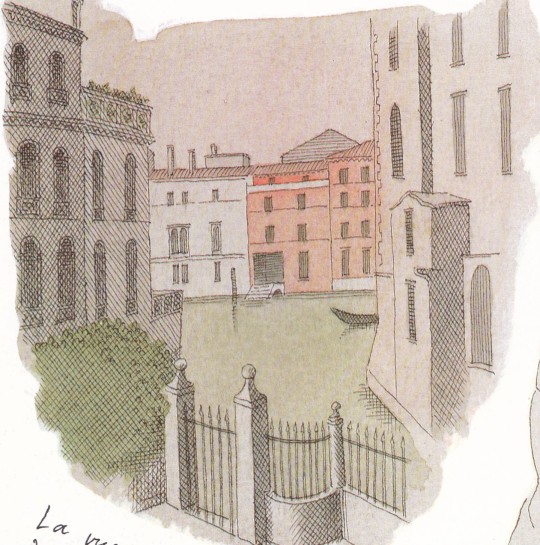
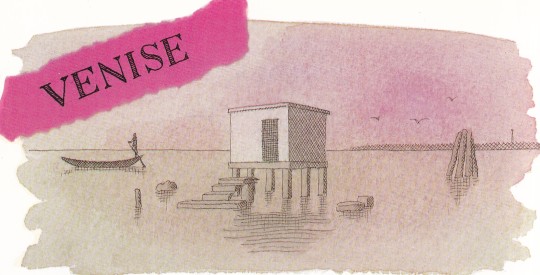
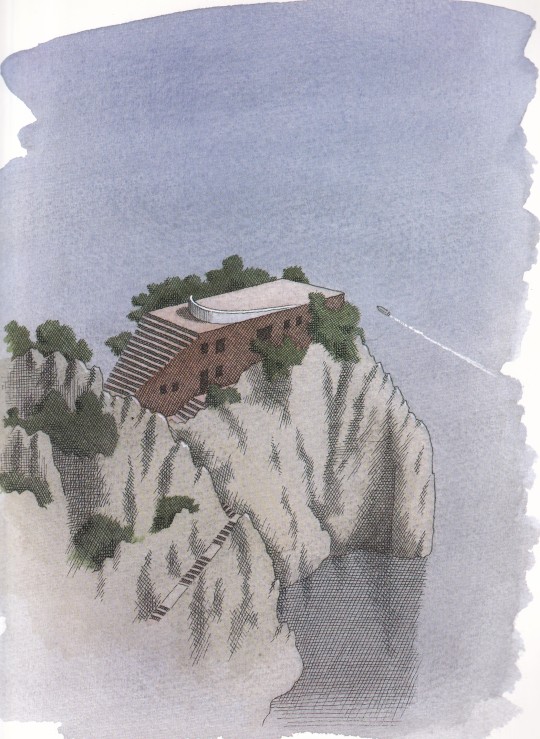
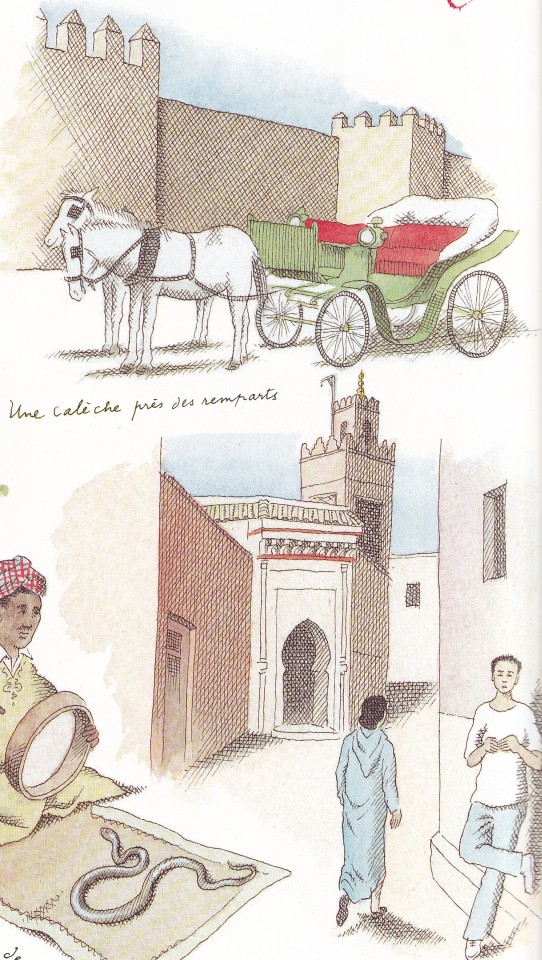
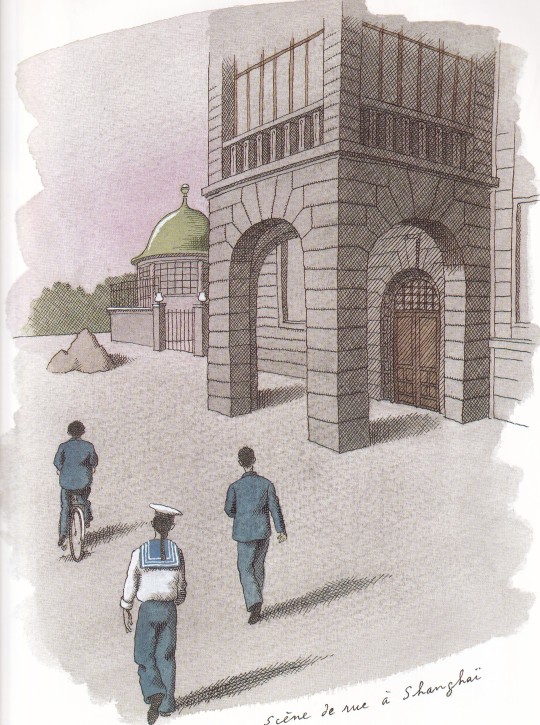
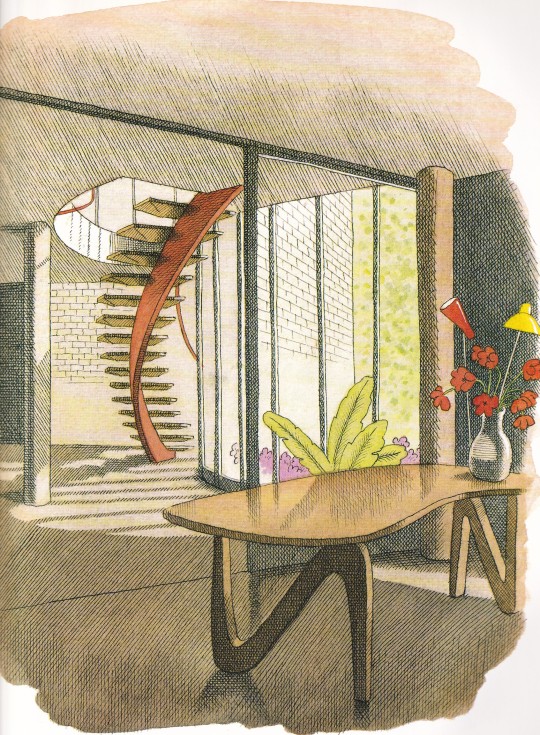
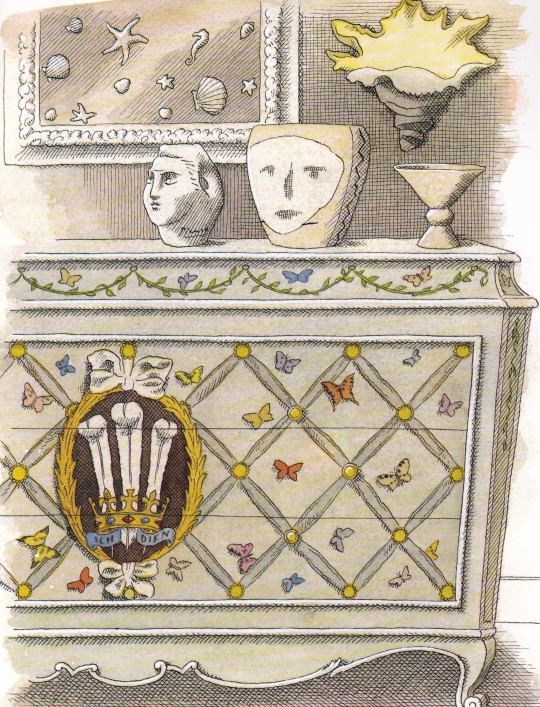
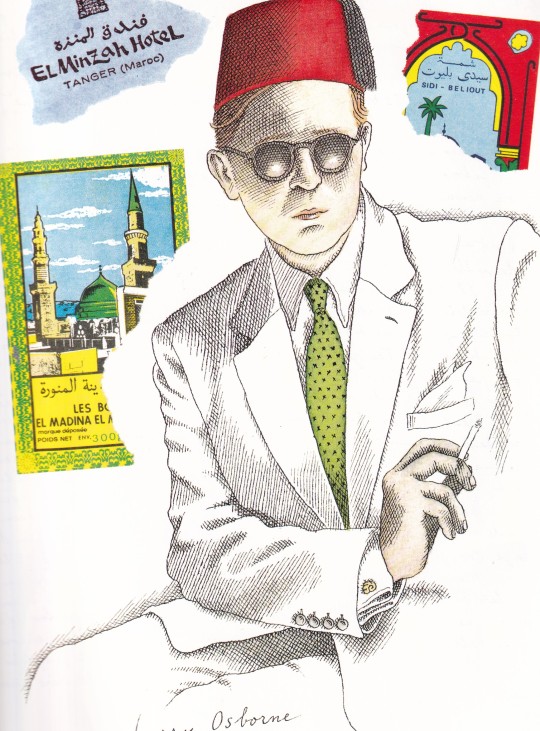
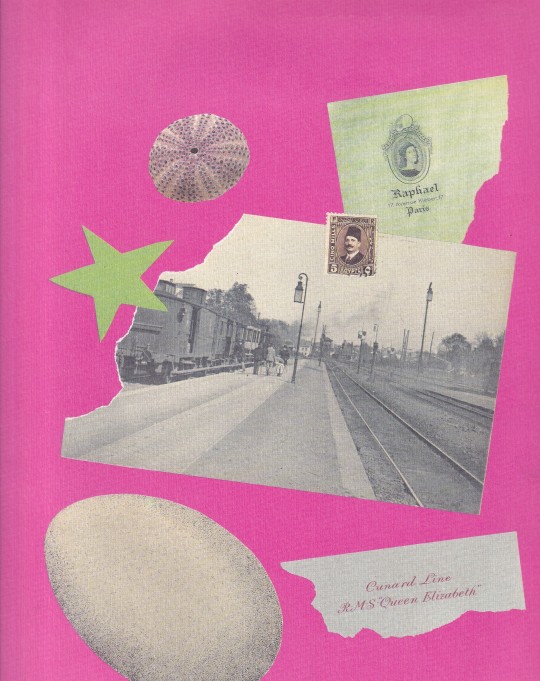
Pierre Le-Tan Album
Dirécteur ouvrage : Frank Maubert
Aubier, Paris 1990, 158 pages, 23,5x31cm, ISBN 2-7007-2838-6
euro 520,00
email if you want to buy [email protected]
“I suoi disegni devono essere letti e le sue parole devono essere viste“, dice di Pierre l’amico e scrittore Umberto Pasti. E’ un privilegio entrare, seppur virtualmente, nella casa studio parigina – un tempo pied-a-terre di Jean Cocteau – di Pierre Le-Tan (1950-2019), illustratore e artista, nato a Parigi da padre vietnamita e madre francese.
E’ dal padre, pittore e figlio di un nobile tonkinese, che Le-Tan impara a disegnare, appassionandosi presto all’amore per i libri antichi e le stampe giapponesi e cinesi. Tanto che – ancora adolescente – Le-Tan è incaricato dal New Yorker Magazine di creare una copertina, opera che segna l’inizio di una lunga e fruttuosa collaborazione editoriale anche con molte altre pubblicazioni, da Vogue e Harper’s Bazaar. Per il New Yorker Pierre realizza 18 copertine.
In oltre 50 anni di lavoro la creatività di Le-Tan si arricchisce, spaziando dalla scenografia per il cinema e il teatro, alla collaborazione con la casa di moda parigina di sua figlia Olympia, ma soprattutto eccelle nella invenzione di oltre 100 copertine di libri e poster di film. Il lavoro di Le-Tan è stato esposto nelle gallerie di tutto il mondo; nel 2004 è stato oggetto di una retrospettiva al Museo Nacional Centro de Arte Reina Sofía di Madrid. Ha realizzato copertine per libri di scrittori noti, come il romanziere premio Nobel Patrick Modiano.
La prosa malinconica di Modiano è perfetta per le riflessioni di Le-Tan spesso rivolte ad una Parigi dimenticata, piena di personaggi strani e fascinosi. Una delle pubblicazioni di Le-Tan, “Album” (1990), traduce al meglio il suo stile intimo e insieme eclettico: un “album” pieno di ricordi, di Greta Garbo, Christian Lacroix, Mick Jagger, foto di vecchi amici, centinaia di disegni che raccontano della gita a casa di Cecil Beaton, a un portasigarette realizzato da Picasso, alle scarpe di Cardin, a una sedia che proviene dalla Reggia di Versailles.
30/05/24
19 notes
·
View notes
Text
“Seen from the street, the Onion Cellar looked like many of the newer night clubs which are distinguished from the older bars and cabarets by, among other things, their higher prices. The higher prices were justified by the outlandish decoration of these night spots, many of which termed themselves “Artists’ clubs” and also by their names. There was “The Ravioli Room” (discreet and refined), “The Taboo” (mysterious and existentialist), “The Paprika” (spicy and high-spirited). And of course there was “The Onion Cellar”.
The words “Onion Cellar” and a poignantly naive likeness of an onion had been painted with deliberate awkwardness on an enamel sign which hung in the old German manner from elaborate wrought-iron gallows in front of the house. The one and only window was glassed with bottle-green bull’s-eye panes. The iron door, painted with red lead, had no doubt seen service outside an air-raid shelter in the war years. Outside it stood the doorman in a rustic sheepskin. Not everyone was allowed in the Onion Cellar. Especially on Fridays, when wages turn to beer, it was the doorman’s business to turn away certain Old City characters, for whom the Onion Cellar was too expensive in the first place. Behind the red-lead door, those who were allowed in found five concrete steps. You went down, found yourself on a landing some three feet square, to which a poster for a Picasso show lent an original, artistic turn. Four more steps took you to the checkroom. “Please pay later,” said a little cardboard sign, and indeed, the young man at the counter, usually an art student with a beard, refused to take money in advance, because the Onion Cellar was not only expensive but also and nevertheless high class.
The owner in person welcomed every single guest with elaborate gestures and mobile, expressive eyebrows, as though initiating him into a secret rite. As we know, the owner’s name was Ferdinand Schmuh; he was a man who shot sparrows now and then, and had a keen eye for the society which had sprung up in Düsseldorf (and elsewhere, though not quite so quickly) since the currency reform.
The Onion Cellar—and here we see the note of authenticity essential to a successful night club—was a real cellar; in fact, it was quite damp and chilly under foot. Tubular in shape, it measured roughly thirteen by sixty, and was heated by two authentic cast-iron stoves. Yet in one respect the Cellar wasn’t a cellar after all. The ceiling had been taken off, so that the club actually included the former ground-floor apartment. The one and only window was not a real cellar window, but the former window of the ground-floor apartment. However, since one might have looked out of the window if not for its opaque bull’s-eye panes; since there was a gallery that one reached by a highly original and highly precipitous staircase, the Onion Cellar can reasonably be termed “authentic”, even if it was not a real cellar—and besides, why should it have been?
Oskar has forgotten to tell you that the staircase leading to the gallery was not a real staircase but more like a companionway, because on either side of its dangerously steep steps there were two extremely original clotheslines to hold on to; the staircase swayed a bit, making you think of an ocean voyage and adding to the price.
The Onion Cellar was lighted by acetylene lamps such as miners carry, which broadcast a smell of carbide—again adding to the price—and transported the customer unto the gallery of a mine, a potash mine for instance, three thousand feet below the surface of the earth: cutters bare to the waist hack away at the rock, opening up a vein; the scraper hauls out the salt, the windlass roars as it fills the cars; far behind, where the gallery turns off to Friedrichshall Two, a swaying light; that’s the head foreman and here he comes with a cheery hello, swinging a carbide lamp that looks exactly like the carbide lamps that hung from the unadorned, slapdashly whitewashed walls of the Onion Cellar, casting their light and smell, adding to the prices, and creating an original atmosphere.
The customers were uncomfortably seated on common crates covered with onion sacks, yet the plank tables, scrubbed and spotless, recalled the guests from the mine to a peaceful peasant inn such as we sometimes see in the movies.
That was all! But what about the bar? No bar. Waiter, the menu please! Neither waiter nor menu. In fact, there was no one else but ourselves, the Rhine River Three. Klepp, Scholle, and Oskar sat beneath the staircase that was really a companionway. We arrived at nine, unpacked our instruments, and began to play at about ten. But for the present it is only a quarter past nine and I won’t be able to speak about us until later. Right now let us keep an eye on Schmuh, who occasionally shot sparrows with a small-caliber rifle. As soon as the Onion Cellar had filled up—half-full was regarded as full—Schmuh, the host, donned his shawl. This shawl had been specially made for him. It was cobalt-blue silk, printed with a golden-yellow pattern. I mention all this because the donning of the shawl was significant. The pattern printed on the shawl was made up of golden-yellow onions. The Onion Cellar was not really “open” until Schmuh had put on his shawl.
The customers—businessmen, doctors, lawyers, artists, journalists, theater and movie people, well-known figures from the sporting world, officials in the provincial and municipal government, in short, a cross section of the world which nowadays calls itself intellectual—came with wives, mistresses, secretaries, interior decorators, and occasional male mistresses, to sit on crates covered with burlap. Until Schmuh put on his golden-yellow onions, the conversation was subdued, forced, dispirited. These people wanted to talk, to unburden themselves, but they couldn’t seem to get started; despite all their efforts, they left the essential unsaid, talked around it. Yet how eager they were to spill their guts, to talk from their hearts, their bowels, their entrails, to forget about their brains just this once, to lay bare the raw, unvarnished truth, the man within. Here and there a stifled remark about a botched career, a broken marriage. One gathers that the gentleman over there with the massive head, the intelligent face and soft, almost delicate hands, is having trouble with his son, who is displeased about his father’s past. Those two ladies in mink, who still look quite attractive in the light of the carbide lamp, claim to have lost their faith, but they don’t say in what. So far we know nothing about the past of the gentleman with the massive head, nor have we the slightest idea what sort of trouble his son is making for him on account of this unknown past; if you’ll forgive Oskar a crude metaphor, it was like laying eggs; you push and push…
The pushing in the Onion Cellar brought meager results until Schmuh appeared in his special shawl. Having been welcomed with a joyful “Ah!” for which he thanked his kind guests, he vanished for a few minutes behind a curtain at the end of the Onion Cellar, where the toilets and storeroom were situated.
But why did a still more joyous “Ah”, an “Ah” of relief and release, welcome the host on his reappearance? The proprietor of a successful nightclub disappears behind a curtain, takes something from the storeroom, flings a choice selection of insults in an undertone at the washroom attendant who is sitting there reading an illustrated weekly, reappears in front of the curtain, and is welcomed like the Saviour, like the legendary uncle from Australia!
Schmuh came back with a little basket on his arm and moved among the guests. The basket was covered with a blue-and-yellow checkered napkin. On the cloth lay a considerable number of little wooden boards, shaped like pigs or fish. These he handed out to his guests with little bows and compliments which showed, beyond the shadow of a doubt, that he had grown up in Budapest and Vienna; Schmuh’s smile was like the smile on a copy of a copy of the supposedly authentic Mona Lisa.
The guests, however, looked very serious as they took their little boards. Some exchanged boards with their neighbors, for some preferred the silhouette of a pig, while others preferred the more mysterious fish. They sniffed at the pieces of wood and moved them about. Schmuh, after serving the customers in the gallery, waited until all the little boards had come to rest.
Then—and every heart was waiting—he removed the napkin, very much in the manner of a magician: beneath it lay still another napkin, upon which, almost unrecognizable at first glance, lay the paring knives.
These too he proceeded to hand out. But this time he made his rounds more quickly, whipping up the tension that permitted him to raise his prices; he paid no more compliments, and left no time for any exchanges of knives; a calculated haste entered into his movements. “On your mark, get set,” he shouted. At “ Go” he tore the napkin off the basket, reached into the basket, and handed out, dispensed, distributed among the multitude onions—onions such as were represented, golden-yellow and slightly stylized, on his shawl, plain ordinary onions, not tulip bulbs, but onions such as women buy in the market, such as the vegetable woman sells, such as the peasant, the peasant’s wife, or the hired girl plants and harvests, onions such as may be seen, more or less faithfully portrayed in the still lifes of the lesser Dutch masters. Such onions, then, Schmuh dispensed among his guests until each had an onion and no sound could be heard but the purring of the stoves and the whistling of the carbide lamps. For the grand distribution of onions was followed by silence. Into which Ferdinand Schmuh cried: “Ladies and gentlemen, help yourselves.” And he tossed one end of his shawl over his left shoulder like a skier just before the start. This was the signal.
The guests peeled the onions. Onions are said to have seven skins. The ladies and gentlemen peeled the onions with the paring knives. They removed the first, third, blond, golden-yellow, rust-brown, or better still, onion-colored skin, they peeled until the onion became glassy, green, whitish, damp, and water-sticky, until it smelled, smelled like an onion. Then they cut it as one cuts onions, deftly or clumsily, on the little chopping boards shaped like pigs or fish; they cut in one direction and another until the juice spurted or turned to vapor—the older gentlemen were not very handy with paring knives and had to be careful not to cut their fingers; some cut themselves even so, but didn’t notice it—the ladies were more skillful, not all of them, but those at least who were housewives at home, who knew how one cuts up onions for hash-brown potatoes, or for liver with apples and onion rings; but in Schmuh’s onion cellar there was neither, there was nothing whatever to eat, and anyone who wanted to eat had to go elsewhere, to the “Fischl”, for instance, for at the Onion Cellar onions were only cut. Why all these onions? For one thing, because of the name. The Onion Cellar had its specialty: onions. And moreover, the onion, the cut onion, when you look at it closely… but enough of that, Schmuh’s guests had stopped looking, they could see nothing more, because their eyes were running over and not because their hearts were so full; for it is not true that when the heart is full the eyes necessarily overflow, some people can never manage it, especially in our century, which in spite of all the suffering and sorrow will surely be known to posterity as the tearless century. It was this drought, this tearlessness that brought those who could afford it to Schmuh’s Onion Cellar, where the host handed them a little chopping board—pig or fish—a paring knife for eighty pfennigs, and for twelve marks an ordinary field-, garden-, and kitchen-variety onion, and induced them to cut their onions smaller and smaller until the juice—what did the onion juice do? It did what the world and the sorrows of the world could not do: it brought forth a round, human tear. It made them cry. At last they were able to cry again. To cry properly, without restraint, to cry like mad. The tears flowed and washed everything away. The rain came. The dew. Oskar has a vision of floodgates opening. Of dams bursting in the spring floods. What is the name of that river that overflows every spring and the government does nothing to stop it? After this cataclysm at twelve marks eighty, human beings who have had a good cry open their mouths to speak. Still hesitant, startled by the nakedness of their own words, the weepers poured out their hearts to their neighbors on the uncomfortable, burlap-covered crates, submitted to questioning, let themselves be turned inside-out like overcoats. But Oskar, who with Klepp and Scholle sat tearless behind the staircase or companionway, will be discreet; from among all the disclosures, self-accusations, confessions that fell on his ears, he will relate only the story of Miss Pioch, who lost her Mr. Vollmer many times over, so acquiring a strong heart and a tearless eye, which necessitated frequent visits to Schmuh’s Onion Cellar.”
Günter Grass, The Tin Drum, (tr. Ralph Manheim)
#a place devoted to emotional pageantry and self-indulgent catharsis for spineless cowards#wow he literally predicted social media#günter grass#the tin drum#i read much of the night and go south in the winter#longpost
14 notes
·
View notes
Text
Montmartre
How do I describe Montmartre? It sits high above Paris and has been home to the greatest creative minds in history at one time or another. From Renoir to F. Scott Fitzgerald, they all gathered here to celebrate a bohemian lifestyle and feed their creative juices. Artists, writers, dancers, prostitutes, pretty much anyone who wanted to escape came here and they were welcomed. After a long period of wars, famine, and general misery two Parisians in exile, Hubert Rohault de Fleury and Alexandre Legentil, promised to build a new church if God saved France. Apparently he did, and the big, beautiful Sacré-Cœur (Sacred Heart) was built smack dab in the middle of all the heathens.

At first they thought, "there goes the neighborhood", but then they just kept right on doing their thing and Sacré-Cœur did its thing. How's that for an incredibly brief summary? We love it here. There's music, art, wonderful food, beautiful shops, and the vibe doesn't seem to have changed over all those centuries. Street after street you'll find artists plying their trade. Want a quick sketch of your own face? You can stand right in the street and have it done in minutes. I didn't. Why would I want my face?

Mickey was busy snapping away with his camera so I pursued my hobby which is helping the local economy. THis lovely shp sold locally made olive oil soap with every fragrance you can imagine.
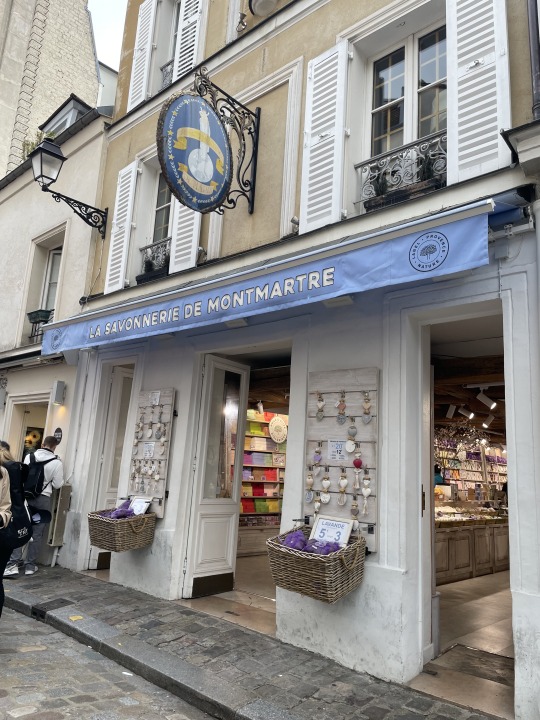
Those baskets at the doors hold bags of dried lavender that smelled wonderful. 5 euros for 3 bags! The gentleman running the store said they had a huge summer harvest.
This post is a bit of a mess, somewhat disjointed, but it's late and I just want to get it done - so pardon me if I jump around.
We stopped in at a place we remembered from our last visit, The Museum of Montmartre, a wonderful collection of paintings throughout the history of the village by names I recognize and some I don't.

That building is separated by a garden from a second building, all parts of the museum. The garden is quite famous...
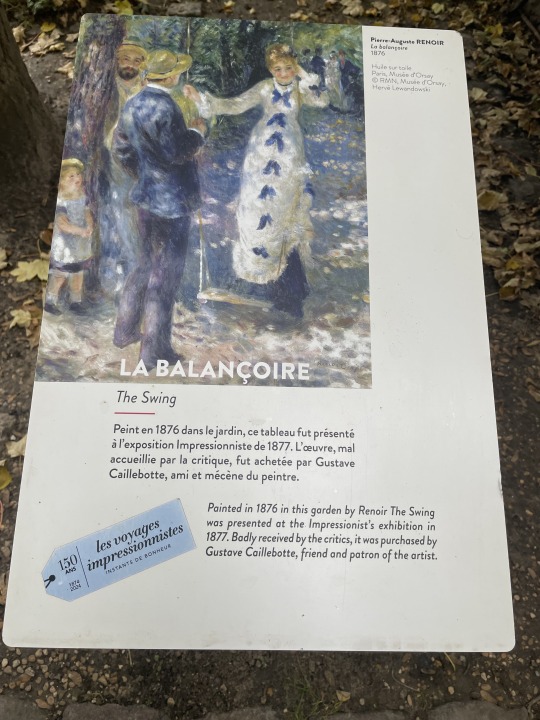
I told Mickey to get on the swing and look, but this was the best he could do.

It's a really peaceful and lovely spot.


From these gardens you can look out at parts of Montmartre that are humming along as they always have. Look at this little vineyard!

Down at the bottom of that vineyard is a coral colored building, called Lapin Agile.

The Cabaret du Lapin Agile was a favorite spot for chansonniers poets (singer/songwriters) and artists to meet. Carco, Apollinaire, Courteline, Max Jacob, Renoir, Utrillo, Modigliani, Braque, and Picasso were mentioned as regulars. In 1875 the painter Andre' Gill painted a sign showing a rabbit jumping out of a pot, "The Rabbit of Gill" ( le Lapin a Gill). It was transformed into the then natural"Agile Rabbit" (le Lapin Agile). Anyyywayyyy, The Cabaret du Lapin Agile is the last operating artistic cabaret.

I'd like that framed for my kitchen.
We continued our pleasant stroll around Montmartre, enjoying the music that drifted down each street. Check out that mural of Toulouse-Lautrec, famous for his paintings and posters of the Moulin Rouge.

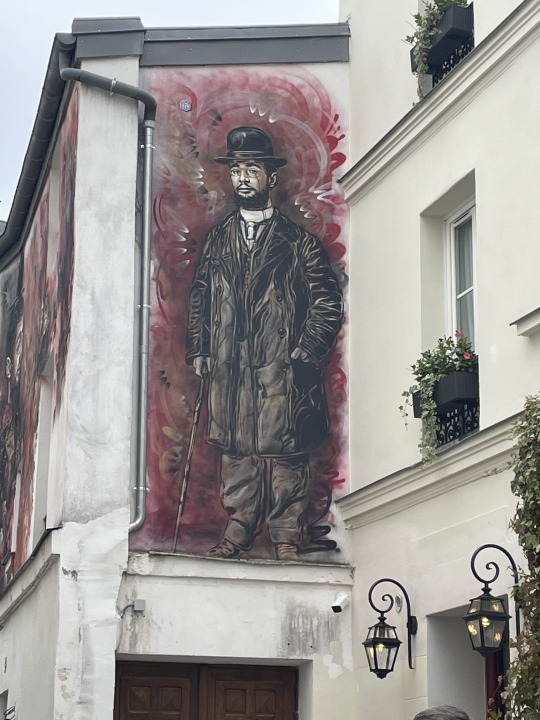

I'm going to fast forward this. We'd eaten a light brunch today so we stopped for dinner earlier than usual, around 5:30. We ate at Le Grenier and it was delicious. MIckey was craving beef bourguignon and was happy to see it on the menu.

My salad with roasted goat cheese on toasted baguette slices was out of this world. The vegetables here always taste like they went out back and plucked them from the garden. A light drizzle of balsamic made it perfect.
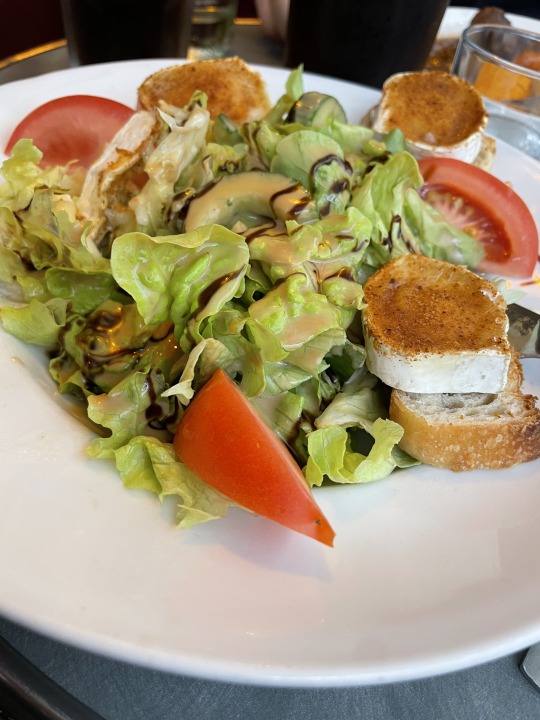
A bit later , as the sun set, we were glad we'd eaten early because the cafes and restaurants filled up quickly.
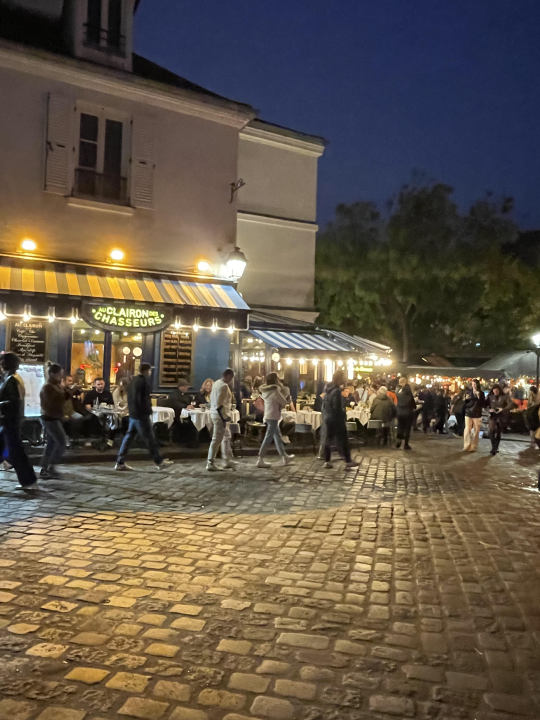


Yeah, my night time photography stinks. We sat and listened to this guy for a few minutes because A) he was entertaining ad B) I was tired.
youtube
After that, Mickey took a few more photos of spots that he wanted to snap at night and we headed down the hill to catch the metro back to our apartment. We made just one quick stop at our favorite macaron store for a treat. Delicious!
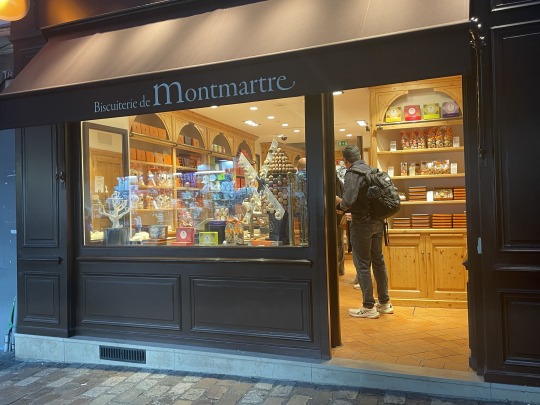
And that, my friends, is a wrap on this day. We had waffled on whether o not we wanted to visit Versailles tomorrow and it looks like we may not have the time. Dare I say next time? Good reason to come back, right? The only tickets still available are for 2pm and later and Versailles is sort of an all day thing. We wouldn't want to rush. So, thankfully there are a million other options here in beautiful Paris, and we can play it by ear. C'est la vie! I'm off to bed to dream sweet dreams. I hope you do the same. Sending out loads of love tonight. Until tomorrow - stay safe, stay well. XOXO, Nancy
4 notes
·
View notes